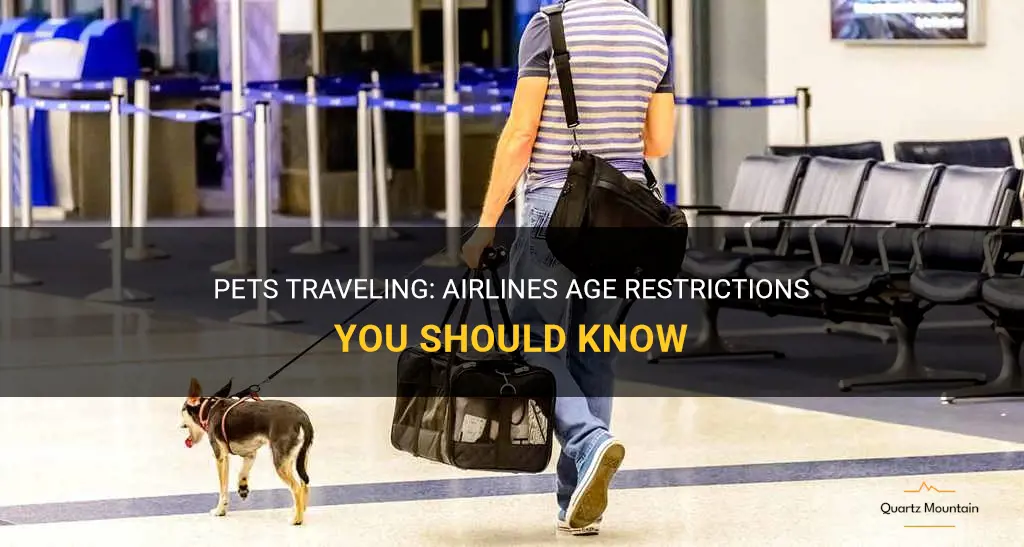
Did you know that some airlines have age restrictions for pets flying in the cabin? If you're planning to travel with your furry friend, it's important to check the airline's policy to ensure they meet the age requirements. This restriction is in place to prioritize the safety and comfort of both the pet and other passengers during the flight. So, let's dive into the world of pet travel airlines and their age restrictions!
What You'll Learn
- Do pet travel airlines have restrictions on the age of pets that are allowed to travel?
- What are the typical age restrictions for pets traveling on airlines?
- Are there any exceptions or special considerations for puppies or kittens when it comes to airline travel?
- How do airlines determine the age of a pet when it comes to travel restrictions?
- Are there any additional requirements or documentation needed for older pets to travel on airlines?

Do pet travel airlines have restrictions on the age of pets that are allowed to travel?
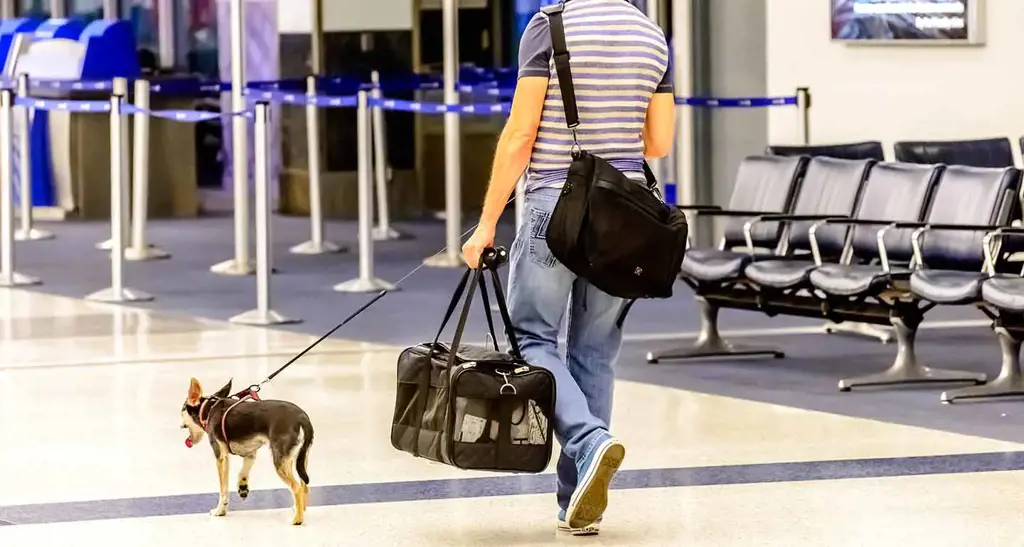
Pet travel airlines do have restrictions on the age of pets that are allowed to travel. This is to ensure the safety and well-being of the pets during the journey. The age restrictions vary depending on the airline and the destination. It is important for pet owners to familiarize themselves with these restrictions before making travel arrangements for their furry friends.
One common age restriction for pet travel is that pets must be at least 8 weeks old to travel by air. This is because puppies and kittens younger than 8 weeks are still very vulnerable and may not be able to handle the stress and physical demands of air travel. Additionally, younger pets may not have developed the necessary immunizations and health certificates required for travel.
Another age restriction commonly imposed by airlines is that pets must be at least 12 weeks old to travel internationally. This is because many countries have strict import regulations for animals, and pets must meet certain age requirements to be eligible for entry. These regulations are in place to prevent the spread of diseases and to ensure the health and safety of both the pet and the local animal population.
In addition to these age restrictions, some airlines also have upper age limits for pets. This is particularly true for larger dog breeds, as they tend to have shorter lifespans compared to smaller breeds. Airlines may restrict the travel of pets over a certain age to reduce the risk of health issues or complications during the journey.
It is worth noting that even if a pet meets the age requirements set by an airline, it is still important to consider the individual pet's health and well-being before making travel arrangements. Some pets, especially older ones or those with pre-existing health conditions, may not be suitable candidates for air travel. It is always recommended to consult with a veterinarian to assess the pet's fitness for travel.
To ensure a smooth and stress-free travel experience for pets, it is important to plan ahead and make arrangements well in advance. This includes researching the specific airline's policies and requirements, obtaining the necessary health certificates and vaccinations, and ensuring that the pet is properly crate trained and accustomed to the travel crate.
In conclusion, pet travel airlines do have restrictions on the age of pets that can travel. These restrictions are in place to ensure the safety and well-being of the pets during the journey. It is important for pet owners to be aware of these restrictions and to plan their travel arrangements accordingly. By taking the necessary precautions and considering the individual pet's health and needs, pet owners can help ensure a smooth and comfortable journey for their furry friends.
White House Announces Updated Europe Travel Restrictions Amidst COVID-19 Surge
You may want to see also

What are the typical age restrictions for pets traveling on airlines?
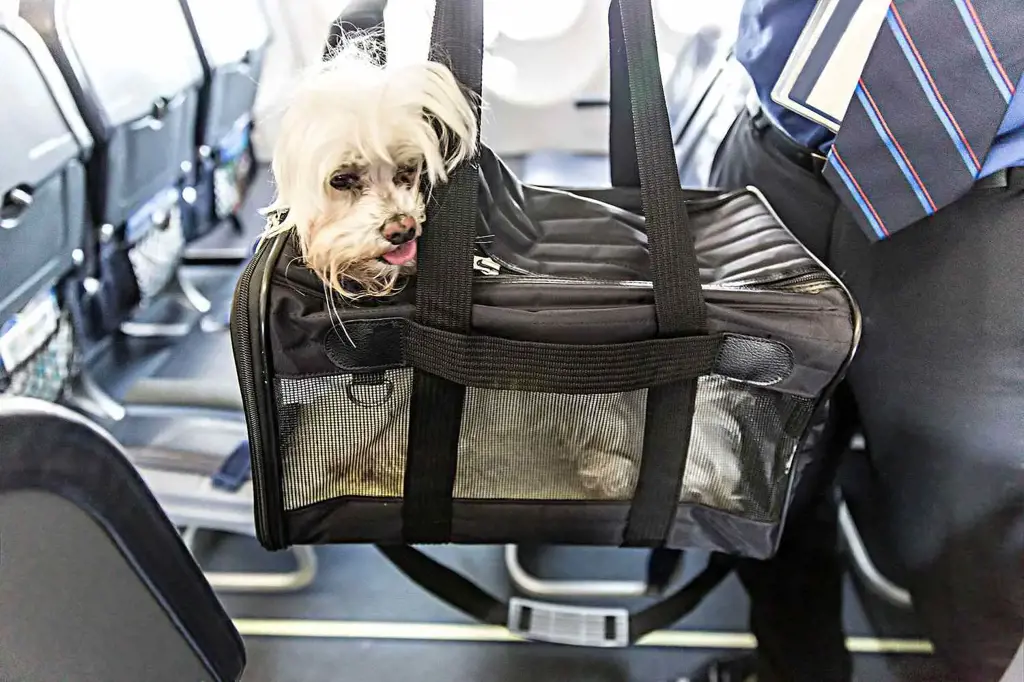
When planning to travel with pets, it is essential to be aware of the age restrictions imposed by airlines. These restrictions are in place to ensure the safety and well-being of both the pets and other passengers on the plane. Here, we will discuss the typical age restrictions for pets traveling on airlines, along with some important considerations to keep in mind.
Most airlines have a minimum age requirement for pets traveling in the cabin. This age restriction is typically around 8 weeks for most domestic flights. However, for international flights, the minimum age requirement may vary depending on the country and airline. It is crucial to check with the specific airline you plan to travel with to confirm their age restrictions.
There are a few reasons why airlines impose age restrictions for pets. Firstly, young animals, especially those under 8 weeks, are more susceptible to stress and may not handle the travel experience well. They may also be more prone to getting sick during the journey. Additionally, airlines want to ensure that pets are fully weaned and have received the necessary vaccinations before flying.
It is important to note that some airlines do not allow pets to travel in the cabin if they are less than a certain age, even if they are accompanied by their owners. In such cases, pet owners may need to consider alternative options such as shipping the pet as cargo or arranging for a pet transport service.
When traveling with pets, it is crucial to follow the airline's guidelines and make the necessary preparations. Here are some steps to consider:
- Research the airline's pet policies: Before booking a flight, thoroughly research the airline's policies regarding pet travel. Look for information on age restrictions, required documentation, carrier guidelines, and any additional fees.
- Consult with a veterinarian: Talk to your veterinarian to ensure that your pet is healthy enough for travel. They can advise on any necessary vaccinations, health checks, or precautions based on your specific pet's age and breed.
- Choose an appropriate carrier: Invest in a sturdy and well-ventilated carrier that meets the airline's requirements. Make sure the carrier is large enough for your pet to stand, turn around, and lie down comfortably.
- Familiarize your pet with the carrier: Introduce your pet to the carrier well in advance of the trip. Allow them to explore it, sleep inside it, and become comfortable with the space. This will help reduce stress during the journey.
- Pack essentials for your pet: Pack all necessary supplies for your pet, including food, water, medications (if applicable), toys, and comfort items. It is also a good idea to bring familiar scents, such as a blanket or clothing, to help calm your pet during the journey.
- Follow the airline's instructions: On the day of travel, arrive at the airport early and follow the airline's instructions for checking in your pet. Ensure that all required documentation, such as health certificates or vaccination records, are readily available.
Examples of age restrictions for pets traveling on airlines:
- Airline A: Allows pets to travel in the cabin if they are at least 8 weeks old.
- Airline B: Requires pets to be at least 12 weeks old to travel in the cabin.
- Airline C: Does not allow pets younger than 16 weeks to travel in the cabin, regardless of size or breed.
- Airline D: Allows small pets (under 10 pounds) to travel in the cabin from 8 weeks old, but larger pets must be at least 16 weeks old.
Each airline may have different age restrictions and policies, so it is essential to check with the specific airline you plan to travel with. Adhering to these age restrictions and following the necessary steps will help ensure a safe and comfortable journey for your pet.
Exploring the Latest Air Travel Restrictions in Karnataka: What You Need to Know
You may want to see also

Are there any exceptions or special considerations for puppies or kittens when it comes to airline travel?
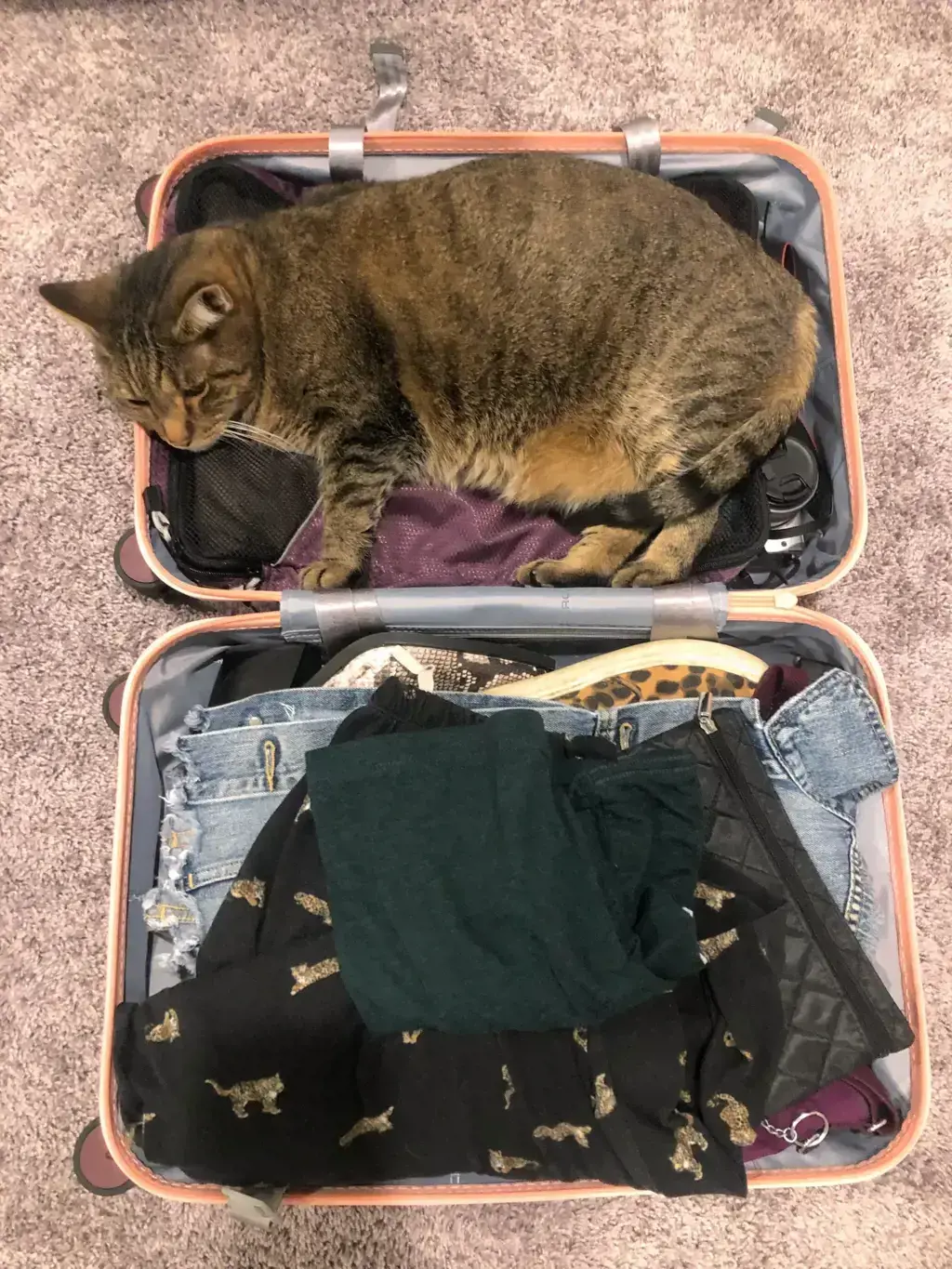
When it comes to airline travel, there are several exceptions and special considerations for puppies and kittens. Traveling by plane can be a stressful experience for any animal, but it can be especially challenging for young and small animals. To ensure their safety and well-being, it is important to follow certain guidelines.
First and foremost, it is crucial to check with the airline regarding their specific rules and regulations for traveling with puppies or kittens. Some airlines have age restrictions, while others require specific documentation or health certificates. It is essential to be familiar with these requirements and ensure compliance to avoid any last-minute surprises or complications.
One of the most critical considerations for puppies and kittens during airline travel is their age and physical development. Young animals, especially those less than 8 weeks old, are generally too young to travel by air. They may not yet have fully developed immune systems and may be more susceptible to stress and sickness. It is generally recommended to wait until the animal is at least 12 weeks old before considering air travel.
Additionally, puppies and kittens should be properly socialized and acclimated to their travel carrier. A carrier that is comfortable and secure can help reduce stress and anxiety during the journey. It is advisable to introduce the carrier well in advance of the travel date, allowing the animal to become familiar with it and associate positive experiences with being inside it.
Furthermore, it is essential to ensure that the carrier is well-ventilated and provides adequate space for the animal to stand, lie down, and turn around comfortably. Additionally, bedding material should be provided to absorb any accidents and provide cushioning. Familiar items, such as blankets or toys, can also help provide a sense of security and familiarity for the animal.
Another crucial consideration is the timing of meals and bathroom breaks. Puppies and kittens have smaller bladders and shorter attention spans compared to adult animals. It is important to plan the travel schedule around their needs, allowing for meal breaks and bathroom breaks at regular intervals. This can help prevent accidents and discomfort during the journey.
During the flight, it is crucial to monitor the animal's behavior and well-being. If the animal seems stressed or anxious, it may be beneficial to provide soothing music or a calming pheromone spray to help create a more relaxing environment. Additionally, a familiar blanket or toy can provide comfort and familiarity.
In conclusion, there are several exceptions and special considerations for puppies and kittens when it comes to airline travel. It is crucial to check with the airline regarding their specific rules and regulations, ensure the animal is of an appropriate age, and provide a comfortable and secure carrier. Proper socialization, timing of meals and bathroom breaks, and monitoring the animal's behavior during the flight are also important factors to consider. By following these guidelines, you can ensure a safe and stress-free journey for your furry friend.
The Implications and Challenges of Restricted Air Travel
You may want to see also

How do airlines determine the age of a pet when it comes to travel restrictions?
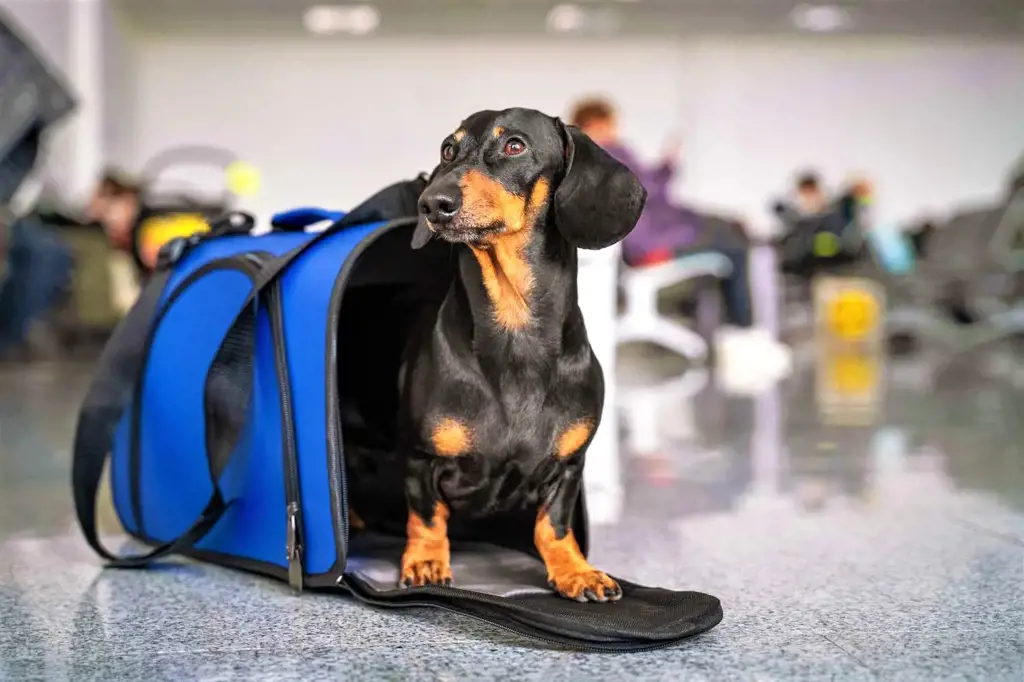
Flying with a pet can be a stressful experience for both owners and furry friends. To ensure the safety and well-being of all animals, airlines have specific guidelines and restrictions in place, including age requirements. These age requirements vary among airlines and can depend on a number of factors.
One common factor in determining the age of a pet when it comes to travel restrictions is the size and breed of the animal. Smaller pets, such as cats or small dogs, may have different age requirements compared to larger animals. This is because larger animals may require more space and may not be able to fit comfortably in the designated pet carrier. Additionally, certain breeds may have specific health concerns that could impact their ability to fly at a young age.
To determine the age of a pet, airlines typically require owners to provide documentation, such as vaccination records or a health certificate, which can help verify the animal's age. Additionally, some airlines may require a veterinarian to examine the pet prior to travel to ensure they are in good health and able to handle the stress of flying.
In some cases, airlines may have a minimum age requirement for pets to fly alone, without their owner. This is typically due to safety concerns and the ability of the animal to navigate the travel process without supervision. For example, some airlines may require pets to be at least 12 weeks old before they can travel alone.
It's important for owners to understand and abide by these age restrictions to ensure the safety and well-being of their pets. Flying at too young of an age can be dangerous for animals, as they may not have fully developed immune systems or may be more susceptible to travel-related stress.
To help illustrate the importance of these age restrictions, let's consider an example. Imagine a family planning to move across the country with their two-month-old puppy. They contact an airline to arrange for the puppy to travel with them in the cabin. However, they are informed that their puppy is too young to fly due to the airline's minimum age requirement of 12 weeks. In this case, the family would need to explore alternative travel options, such as driving, or delaying their move until the puppy reaches the appropriate age.
In conclusion, airlines determine the age of a pet when it comes to travel restrictions based on several factors, including size, breed, and safety concerns. Owners are typically required to provide documentation to verify the animal's age, and some airlines may have minimum age requirements for pets traveling alone. It is essential for owners to adhere to these restrictions to ensure the safety and well-being of their pets during air travel.
Intercity Travel Restrictions in Maharashtra: What You Need to Know
You may want to see also

Are there any additional requirements or documentation needed for older pets to travel on airlines?
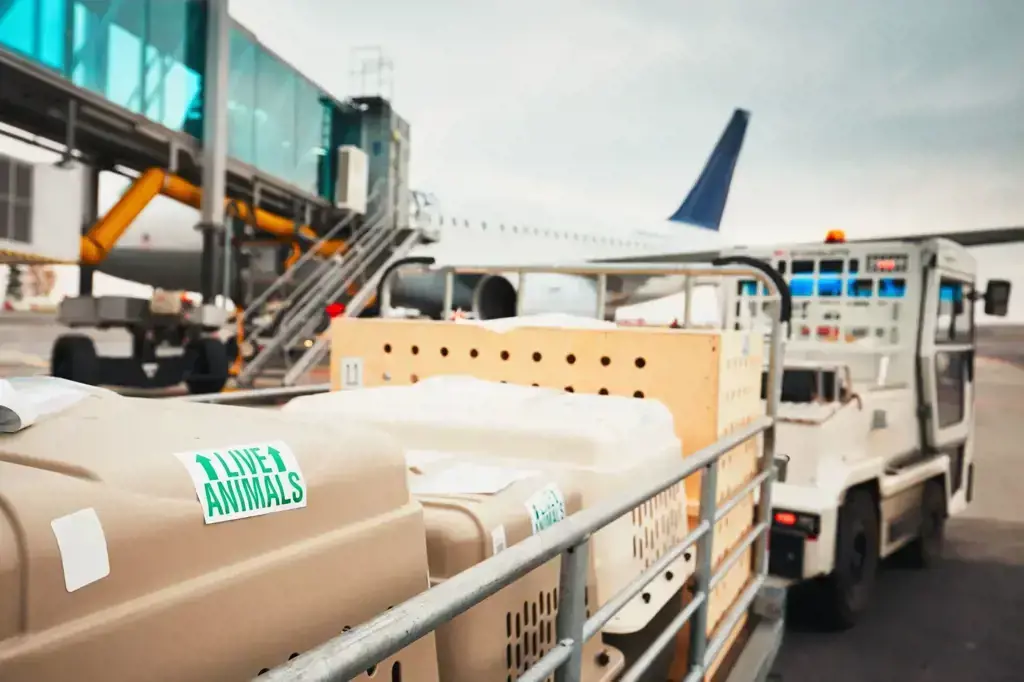
Traveling with pets can be a stressful experience for both the owner and the animal. This stress can be especially heightened when the pet in question is older. While many airlines do allow older pets to fly, there are some additional requirements and documentation that may be necessary to ensure the safety and well-being of the animal.
One of the first things pet owners need to consider is the health of their older pet. Before flying, it is important to have a thorough check-up with a veterinarian to assess the pet's overall health and fitness to travel. This is particularly important for older pets, as they may have pre-existing conditions that could make flying a risk to their health. The veterinarian can provide any necessary vaccinations, ensure that the pet is up to date on parasite prevention, and assess if any medications or accommodations are needed for the flight.
In addition to a health check-up, some airlines may require a special health certificate for older pets. This certificate verifies that the pet is in good health and fit to fly. The requirements for this certificate may vary by airline, so it is important to check with the specific airline before traveling. In some cases, this certificate may need to be issued within a certain timeframe before the flight. It is also advisable to bring a copy of the pet's medical records, including any recent lab work or diagnostic tests, in case they are needed during the journey.
When booking a flight with an older pet, it is important to consider their comfort during the journey. Some airlines may have specific requirements for pet carriers or crates, particularly for older pets. These requirements may include size restrictions, ventilation guidelines, and secure fastenings. It is important to ensure that the carrier or crate meets these specifications and provides enough space for the pet to move around comfortably. Some airlines may also require additional padding or bedding for older pets to provide extra comfort during the flight.
During the flight, it is important to monitor the well-being of the older pet. This may include providing access to water and food, as well as making sure they are comfortable and not showing signs of distress. It is also important to remember that older pets may have more difficulty regulating their body temperature, so keeping them at a comfortable temperature during the flight is crucial. This could mean using ice packs or heating pads, depending on the specific needs of the pet. It is also a good idea to consult with the veterinarian about any additional measures that can be taken to ensure the pet's well-being during the flight.
Overall, while there may be some additional requirements and documentation needed for older pets to travel on airlines, it is still possible for them to fly safely. By consulting with a veterinarian, ensuring the pet is in good health, and taking the necessary precautions during the flight, owners can help ensure a smooth and stress-free journey for their older pet. It is important to research and communicate with the specific airline they plan to fly with to understand their specific requirements and make any necessary arrangements in advance. With careful planning and preparation, older pets can travel comfortably and safely on airlines.
Understanding FAA Travel Restrictions for Non-Prescription Medications
You may want to see also
Frequently asked questions
Airlines typically require pets to be at least 8 weeks old in order to travel. This age restriction ensures that the animal is old enough to handle the stress and physical demands of traveling.
Yes, as long as they meet the minimum age requirement of 8 weeks old, many airlines allow young puppies and kittens to travel. However, it’s important to check with the specific airline for any additional restrictions or guidelines.
While there may not be a specific age restriction for older pets, airlines may require a health certificate or documentation from a veterinarian stating that the animal is fit to travel. This is to ensure that the pet is in good health and can handle the journey.
Yes, most airlines allow senior pets to travel as long as they are in good health and able to handle the journey. However, it’s important to take precautions and consult with a veterinarian before traveling with an older pet to ensure their safety and well-being.
There is typically no age limit for service animals traveling on airlines. However, airlines may require documentation or certification to verify that the animal is a legitimate service animal and trained to assist its owner.







